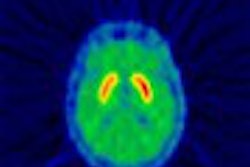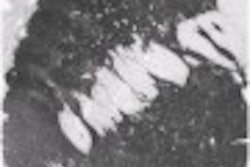Still in its early stages, a new breast imaging technique that pairs SPECT with pinhole collimation shows promise in detecting small lesions with high contrast and signal-to-noise ratios.
The technique, pinhole incomplete circular orbit (PICO), can be used with contemporary SPECT systems equipped with pinhole collimators, and appears to be a better approach to dedicated breast SPECT than conventional planar pinhole scintimammography, according to a study in the current issue of the Journal of Nuclear Medicine.
PICO-SPECT is just one of several techniques that have evolved from the early use of 99mtechnetium and other radionuclides in breast imaging. Previously published work pairing dedicated breast SPECT with parallel, pinhole, and other collimator configurations has shown potential to overcome obstacles posed by SPECT alone.
Martin Tornai, Ph.D. and colleagues from Duke University Medical Center in Durham, NC, evaluated PICO-SPECT imaging of breast lesions of various sizes and activity concentration ratios in a breast phantom and in one patient, and compared performance to planar pinhole imaging.
The team used pinhole collimators made of high-density tungsten (184W) or depleted uranium (238U), with aperture diameters ranging from 1 mm to 4 mm, to image 0.6 cm- and 1 cm-diameter spherical lesions in a breast phantom in planar and PICO-SPECT modes.
The pinhole-collimated camera used in the study traverses 150° to approximately 180° , thus the "incomplete orbit" of its moniker, PICO.
Whether PICO or planar, phantom or patient, the image acquisition technique is the same: as the patient lies prone, the uncompressed breast hangs freely from the chest wall. This orientation decreases contamination from torso uptake of radiopharmaceuticals and minimizes scatter.
In the study, PICO-SPECT imaging exhibited small differences in measured counting rate sensitivity (4.9%) and lesion contrast (8.8%), with larger signal-to-noise differences (20.8%) between tungsten and depleted uranium.
In addition, backgrounds from simulated myocardial uptake made minor contributions to reconstructed image volumes, due to rapid sensitivity fall-off for pinhole apertures, the authors found (JNM, April 2003, Vol. 44:4, pp. 583-593).
Compared with planar pinhole imaging, PICO-SPECT spotted medially located phantom lesions more easily. In fact, the respective contrast of both phantom lesions by PICO-SPECT was 20 times the values obtained from planar imaging for the same pinholes.
In the patient study, a six-fold contrast improvement of the active tumor periphery was obtained with PICO-SPECT over planar imaging. The technique also demonstrated improved image quality and additional information through volumetric imaging data not available with the other approach.
The researchers further determined that, based on peak signal-to-noise ratio, the optimal pinhole aperture diameter is between 2 mm and 3 mm.
"These aperture sizes may have the best performance for lesions as small as 0.6 cm in diameter with activity concentration ratios of 99mTC that are similar to those currently seen in patients," the authors wrote.
While both tungsten and depleted uranium pinhole collimators demonstrated similar performance, the group recommended tungsten due to its accessibility and relative lack of radioactivity concerns.
PICO-SPECT has its drawbacks, the authors noted. Large breasts do not fit well within the field of view, and to adequately sample breast volume without truncation, multiple axial scans may be needed.
Sampling insufficiencies at depth may also exist for large breasts. Evaluation of PICO-SPECT with lesions located at several locations throughout the breast, including near the anterior chest wall and axilla, is warranted, Tornai and colleagues stated.
In addition, while images in the one patient study demonstrated the same improvements between planar and PICO-SPECT as those documented with the phantom, acquisition times were four times longer for PICO than planar (20 minutes versus five).
"Although the imaging differences between investigated aperture types are small, and some limitations to this imaging approach exist, dedicated PICO-SPECT of the breast appears to be an improved technique compared with conventional planar pinhole scintimammography," they concluded.
By Deborah R. DakinsAuntMinnie.com contributing writer
April 24, 2003
Related Reading
Positron emission mammography shows promise for breast imaging, October 28, 2002
New camera may improve scintimammography, August 6, 2002
Scintimammography catches chemoresistance in breast cancer patients, June 13, 2002
FDG-PET predicts outcome in post-therapy breast cancer patients, March 8, 2002
Copyright © 2003 AuntMinnie.com



















